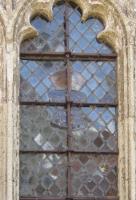 Add My Company
Add My Company
Sign In
The History of Windows
24-03-2014

Windows are an integral part of any property and are important architectural features that are designed to bring natural light and air into rooms. The history of their use spans thousands of years from the days of castles to the modern skyscrapers of today.
Early Days
In the early days of building design, windows were not much more than an opening in a wall. They could be closed by the use of wooden shutters or cloth coverings to provide some protection from the weather and the size and shape used typically varied depending on the region.
The first proper glass windows were confined to high status buildings of the wealthy and
came about as a result of glass making being introduced to Britain during the time of the Romans. These typically featured a latticework of lead strips filled with small glass panes, with this arrangement being inserted into the window space.
Advances in Design
The development of windows through the centuries has been influenced by a few factors although one of the most important is improvements in glass making techniques. Glass tended to be fairly poor quality in the initial stages of it being used as a window material. It was typically thicker than its modern equivalent and had imperfections that affected its transparency.
However, advances in the manufacturing process enabled better quality and stronger glass to be produced. Some of these advances include the manual glass blowing methods that produced cylinder and crown glass, the manufacturing process that enabled polished plate glass to be made, and mass-production methods such as the float process that were developed in the 20th century .
These advances resulted in larger, better quality panes being produced at lower costs such that glass could be used for all buildings. It was possible to make windows bigger, with a single sheet of glass filling the gap as opposed to the more traditional style of smaller panes supported by a framework of glazing bars.
Modern Day
Modern day techniques enable sheets of glass to be made to almost any size and shape required. These production systems also help to make glass a more durable, uniform, and safer material for use in windows so that they can last in place for many years.
Other innovations that have improved window design include the use of double and triple-glazed units, with the insulated space between the panes helping to make windows energy efficient. While traditional wooden frames can still be used, contemporary window production uses a host of other materials for frames that can also help with energy efficiency.
Some of the common materials used these days include UPVC, aluminum, and fiberglass. This range of materials and techniques enables manufacturers to produce windows in a wide variety of sizes and styles to suit any application in residential and commercial buildings.
Architects and building designers are limited only by their imagination these days when it comes to the windows for a property. They can choose from common styles such as bay, casement, and double hung, or come up with more innovative ideas to create unique-looking windows that are still practical, but add to the appearance of a building.
The team at Victory Windows International have been providing a huge range of windows in Coventry for many years, so whether it’s time to upgrade to double or triple glazed units, or you need a specialist to create a custom conservatory, using the most energy efficient glazing options possible – simply give us a call to find out more.
For more information on The History of Windows talk to Victory Windows International Ltd
Enquire Now
List your company on FindTheNeedle.
